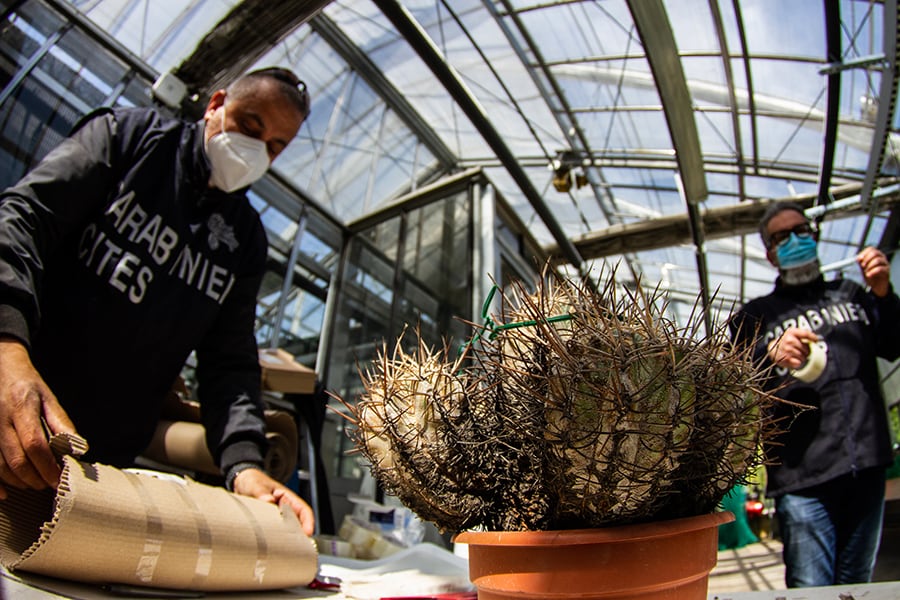
Global cactus traffickers are cleaning out the deserts
As with the market for tiger bones, ivory, pangolin scales and rhino horn, a flourishing illegal global trade exists for plants
 Italian investigators with Operation Atacama prepare a specimen of Copiapoa solaris for shipment back to Chile from a greenhouse in Milan, Italy. A recent raid in Italy involving rare Chilean species highlights the growing scale of a black market in the thorny plants. (Andrea Cattabriga via The New York Times)
Italian investigators with Operation Atacama prepare a specimen of Copiapoa solaris for shipment back to Chile from a greenhouse in Milan, Italy. A recent raid in Italy involving rare Chilean species highlights the growing scale of a black market in the thorny plants. (Andrea Cattabriga via The New York Times)
Andrea Cattabriga has seen a lot of cactuses where they didn’t belong. But he’d never seen anything like Operation Atacama, a bust carried out last year in Italy. A cactus expert and president of the Association for Biodiversity and Conservation, Cattabriga often helps the police identify the odd specimen seized from tourists or intercepted in the post.
This time, however, Cattabriga was confronted by a stunning display: more than 1,000 of some of the world’s rarest cactuses, valued at over $1.2 million on the black market.
Almost all of the protected plants had come from Chile, which does not legally export them, and some were well over a century old. The operation — which occurred in February 2020, but is being made public now because of the cactuses’ recent return to Chile — was most likely the biggest international cactus seizure in nearly three decades. It also highlights how much money traffickers may be earning from the trade.
Seeing the collected cactuses brought a profound sadness to Cattabriga.
©2019 New York Times News Service




